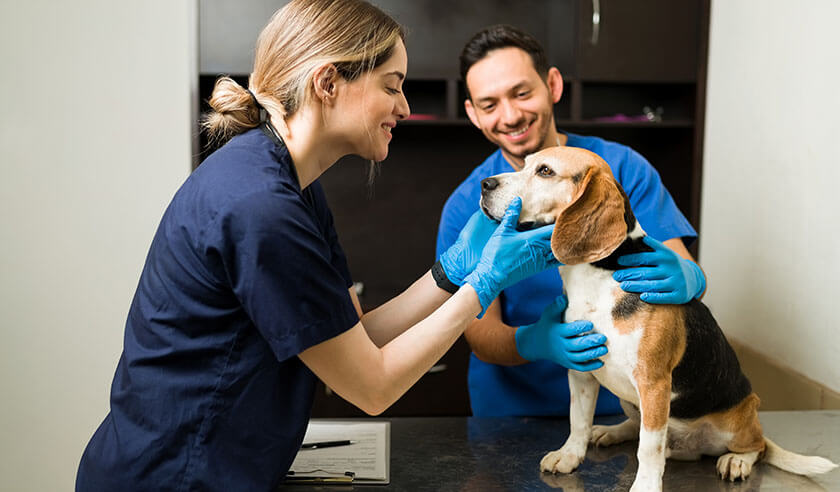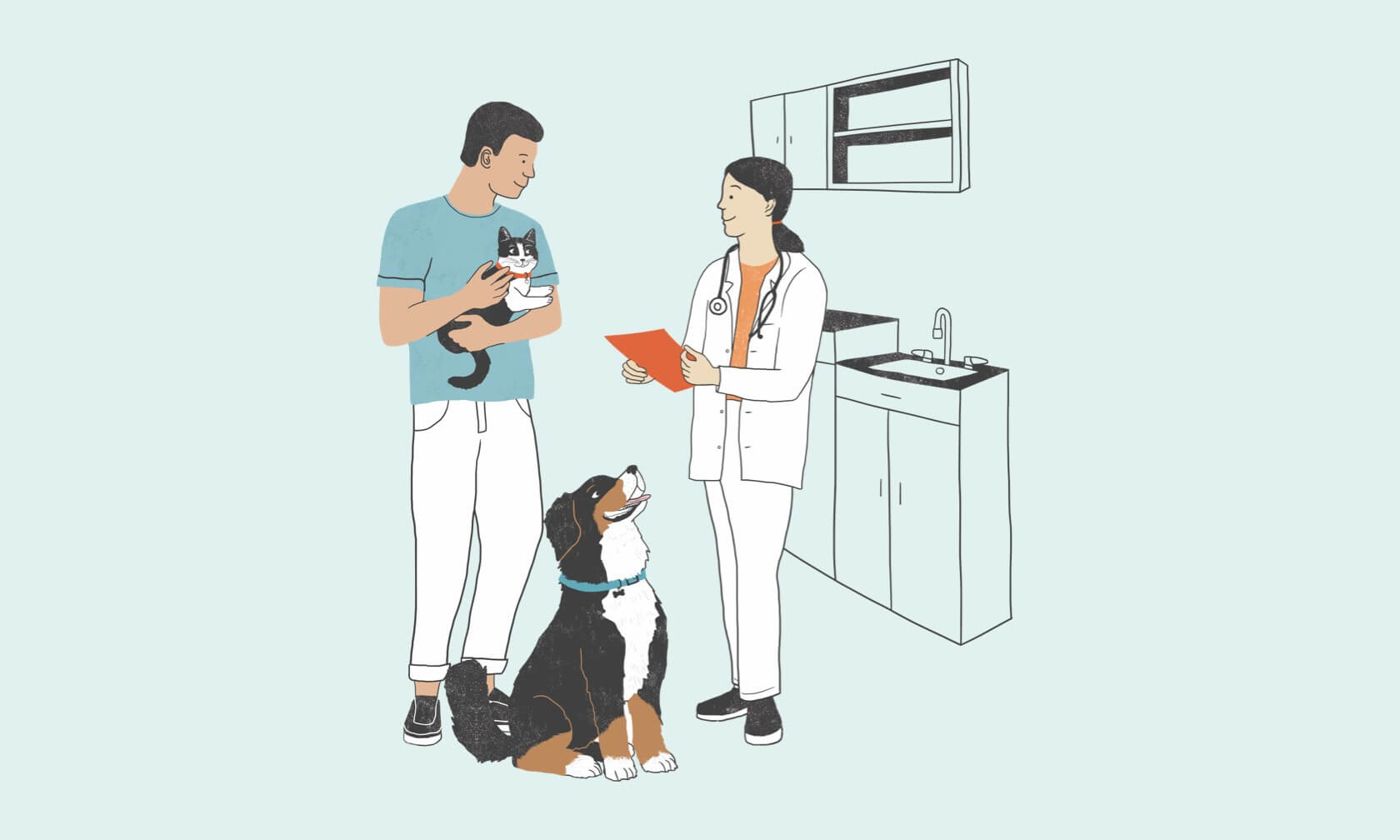Canine hip dysplasia is a common orthopedic condition in dogs, with a prevalence of up to 71% in affected breeds[1]. Hip dysplasia occurs during the dog’s growth stage and results in a deformity of the hip joint. If your dog is experiencing changes in their hind legs or you’re noticing they aren’t using those back legs the way they should, it’s time to talk with your veterinarian.
What is Hip Dysplasia in Dogs?
The hip joint is a ball and socket joint. When dogs are growing, there must be equal growth of the pelvis socket and the head of the thighbone for this ball and socket hip joint to work properly. With hip dysplasia, there isn’t equal growth, and the hip becomes instable or lax (loose-fitting). This instability causes the supporting ligaments, joint capsule, and muscles in the area to stretch. Degenerative joint disease/arthritis changes result as the body attempts to stabilize the hip joint.
Signs of Hip Dysplasia in Dogs
You may notice issues early in your dog’s life (6–12 months), but there are instances where dogs show no signs until they’re older.
The most common signs to watch for include:
- Lameness or Limping in the Hind Limbs
This varies based on the degree of arthritic change. - Lethargy/Decreased Activity
Due to the pain of getting up and moving around, dogs are typically less interested in activities. - Signs of Pain
Dogs may guard their hips/hind legs and prefer not to be petted or touched in those areas. They may also show signs of fear and/or anxiety when approached. - Weakness in the Hind Limbs
Dogs can appear wobbly when standing or moving. - Stiffness
Even if they are moving around, their movements appear stiff. It often takes them some time to loosen up after standing, especially after resting for a long period. - Muscle Loss
You may see the outline of the bones in the hind limbs and hips. - Shifting of Weight to the Forelimbs
Your dog may lean forward onto the front limbs to lessen the weight on the hind limbs. - Mobility Issues
You may notice a reluctance to climb stairs, lameness after exercise, or difficulty jumping. - “Bunny-Hopping” Gait
The hind limbs are held together, and your dog hops instead of running in a normal long stride.
What Causes Hip Dysplasia in Dogs?
Hip dysplasia is most often hereditary. But there can be other factors as well, including:
- Nutrition/diet
- Environment
- Exercise
- Rapid growth
- Rapid weight gain
- Muscle mass
- Hormones
Are Some Dog Breeds Prone to Hip Dysplasia?
Canine hip dysplasia can happen to any breed or sized dog but occurs commonly in large breed dogs such as[1]:
- Labrador retrievers
- Newfoundlands
- Rottweilers
- Saint Bernards
- Mastiffs
- German Shepherds
How is Hip Dysplasia in Dogs Treated?
Treatment can be surgical and/or medical, and it is based on your dog’s symptoms and level of discomfort.
Fortunately, medical therapy works well to manage hip dysplasia for many dogs. This therapy aims to control pain, lameness, and reluctance to be active. Medical therapy often includes one or more of the following therapies:
- Weight loss and management
- Veterinary–approved joint supplements
- Omega-3 fatty acids
- NSAIDs (non-steroidal anti-inflammatory drugs)
- Moderate, low-impact exercise
- Physical therapy
- Cold laser therapy
- Acupuncture
The main reason a surgical procedure may be recommended for hip dysplasia is to remove pain. In some cases, surgery can improve the range of motion of the hip joint as well.
Dogs between 6 and 12 months of age who have no evidence of arthritis on X-ray may qualify for a triple pelvic osteotomy (TPO). This procedure corrects the laxity within the hip joint. Dogs over 12 months who have arthritis or a dislocated hip may be treated with a total hip replacement (THR) or a femoral head ostectomy (FHO).
ZPC-02227
- King, M. (2017). Etiopathogenesis of Canine Hip Dysplasia, Prevalence, and Genetics. Veterinary Clinics Of North America: Small Animal Practice, 47(4), 753-767. doi: 10.1016/j.cvsm.2017.03.001





